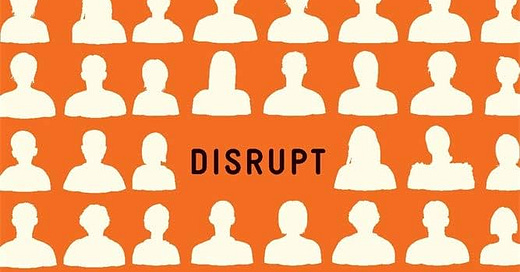Failure to Disrupt — why big efforts to reform education keep failing
A thinly veiled recommendation for Failure to Disrupt by Justin Reich
Hey educators. Recently, a math evangelist friend of mine, Federico Chialvo, former math superteacher at the private Synapse School in Menlo Park, recommended that I read Failure to Disrupt — Why Technology Alone Can’t Transform Education, by MIT professor Justin Reich.
I got it immediately, and oh boy is a drink of water in the desert. If you have ambitions to disrupt education with technology as I have, go out and get this immediately. It will help you navigate around, or at least recognize, many of the traps that edtech change-makers run into.
I’ll be publishing a longer review later, but I want to get my basic thoughts out right away.
Change at scale
First, I should clarify that Justin is addressing attempts to change education at a large scale. That includes
MOOCs like (Massively Open Online Courses), edX, Coursera and Udacity
Algorithmically guided adaptive learning, including AI tutors.
Networked peer-learning communities.
Educational games, including Oregon Trail and The Logical Journey of the Zoombinis.
I have an ambition to change education at scale, but I have met only a handful of other people with that ambition. Most education evangelists set their sights much lower, which is of course fine, but I am distressed that there aren’t more people with higher ambitions.
Is disrupting education at scale even possible? As Justin says, improving the educational system is a monumentally difficult problem, but it is worthy of solution, therefore we shouldn’t give up. It reminds me of the problem of reversing climate change. Monumentally difficult, but giving up amounts to accepting suicide.
An even-handed critique
So why is this book a big deal? Most publications about edtech fall into one of three buckets:
Overoptimistic hype from technologists who drastically underestimate the difficulty of teaching real students, running a real school, and dealing with the educational system.
Sincere but technologically naive writing by educators who are deeply embedded in the educational establishment, and don’t really understand what technology can do.
Over-pessimistic critiques by critics who note the lack of progress and cling to how education has always been done.
This book is neither a doom and gloom take-down, nor a rah rah cheer for technology. This book, written by an edtech insider fully versed in what’s happening is an even-handed critique and analysis
Justin is fundamentally optimistic, but he pulls no punches in criticizing the ways that technologists keep failing to make meaningful change…and this applies to the whole last century, starting with radio, movies and film strips. He identifies the obstacles, cites success stories, and suggests promising directions for us to pursue. Now that’s constructive criticism. That’s the voice we need if we are to make progress.
Addressing the elephant in the room
This book is a big deal because it addresses the elephant in the room for everyone in edtech — why hasn’t digital technology failed to make any significant dent in the way our educational system operates? Well it’s about time we look this issue in the face.
Justin identifies and names 4 persistent obstacles, which I won’t go into here. Suffice it to say that the education system is a complex social construct, so changing it is not a tech problem (thus the subtitle of the book), but a social problem.
And I would add that in my experience it is extremely difficult to find people who are savvy about both education and technology. From 2013 to 2017 I had the privilege of working at Age of Learning, makers of the kid’s educational site ABCMouse, where I helped build the team that created their successful adaptive learning product Mastering Math.
I joined Age of Learning because it was the only edtech company I could find that was willing to commit the time and resources necessary to build the right thing. But even there, I found that only a handful of people were good at both education and technology.
So what’s next?
If you’ve followed my writings here on Substack, you know that I’m highly interested in identifying the obstacles to progress, so we can deal with them, not to get discouraged. My goal is to link up with other education change-makers who have both the background and resources to fully address all three areas necessary for change:
Technology
Education
The strategic skills necessary to cause societal change
I have a decent grasp of the first two elements, and through my work with my company Gamethinking.io, I’m getting a handle on how to handle the third element.
My next step will be to digest Failure to Disrupt, and turn it into a video that explains the issue, plus a worksheet that lets you evaluate and critique your own edtech project using Justin’s criteria. So follow this Substack, share this article, and let me know what you think.
There’s more to come.





Great questions and food for thought in this post. As someone who also has experience in #1 and #2, I often question the same thing. Is large scale change even possible using tech? Is it possible for tech to be a preventative or proactive measure for change or will it always be a reactive way to solve problems?